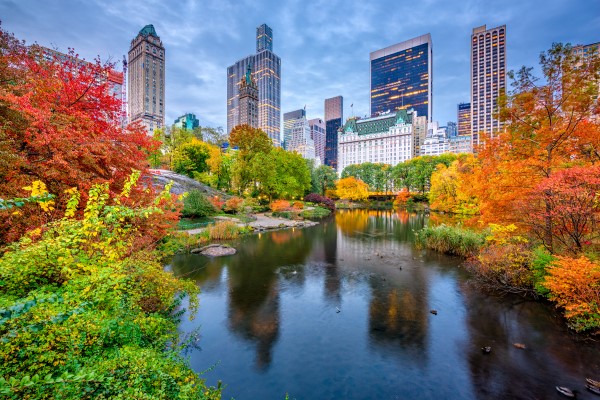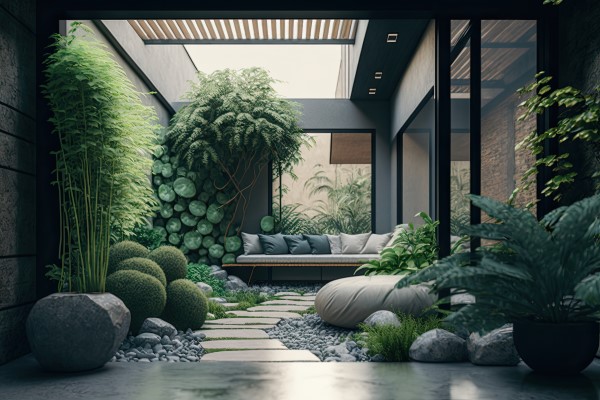April 26th, 2023, is the 201st anniversary of Fredrick Law Olmsted’s birth in 1822.
Olmsted is widely regarded as one of the most influential landscape architects in modern history. His most famous works include Central Park in New York City and the Emerald Necklace Park system in Boston. These parks embody Olmsted’s design philosophy, which is centered around creating sustainable, accessible, visually appealing, and functional spaces that seamlessly blend with their surroundings.
One of Fredrick Law Olmsted’s most significant contributions to landscape architecture was his approach to park design, which emphasized the preservation of natural features and the use of open space to create a sense of calm and refuge in urban environments. His designs also incorporated elements of history and culture, showcasing the unique characteristics of each location and creating a sense of place.
Olmsted’s design philosophy provides valuable insights and lessons for modern-day design firms looking to create sustainable, accessible, and visually appealing spaces, both outdoors and in.
1. Sustainability
When it comes to sustainability, Olmsted believed that landscape architecture should be mindful of its impact on the environment. He advocated for the use of native plants, which are better suited to local environmental conditions and require less maintenance. Olmsted also emphasized the importance of preserving natural habitats and preventing erosion, which helped to maintain ecological balance within his designs.
Takeaway: Use locally sourced materials and prioritize water conservation by designing sites that require less watering, designing buildings that collect water, and promoting natural drainage.
2. Context
Context was another essential aspect of Fredrick Law Olmsted’s design philosophy. He believed that parks and other outdoor spaces should blend seamlessly with the surrounding community, rather than stand out as separate entities. For example, Central Park includes elements such as the Central Park Conservatory Garden, which reflects the surrounding Upper East Side neighborhood’s formal gardens.
Takeaway: Incorporate contextual elements by researching and understanding the local history and culture of the area in which you are designing. Incorporate local art, history, and cultural references to create a sense of place.

3. Accessibility
Accessibility was also critical to Olmsted’s designs, as he believed that everyone should have access to outdoor spaces. He created several parks and parkways specifically to improve accessibility for people who lived in densely populated areas, such as Boston’s Emerald Necklace Park system.
Takeaway: Prioritize accessibility by designing spaces that are easy for people to navigate, using low-incidence routes, building wheelchair ramps, including accessible bathrooms, and providing visual aids.
4. Visual Appeal
Fredrick Law Olmsted created visually appealing outdoor spaces in innovative and functional ways with the goal of creating a cohesive visual theme that fits the environment and the needs of the communities.
Takeaway: You too can create visually appealing spaces in innovative and functional ways, by incorporating elements that have dramatic impact such as water features, art, patios, terraces, fire pits, dramatic lighting, and landscaping design.
5. Functionality
Olmsted believed that outdoor spaces should not only be visually appealing but also serve a practical purpose, such as providing recreational opportunities for people of all ages and backgrounds. This approach ensured that his designs were both attractive and functional, catering to the needs of different communities.
Takeaway: Add practical and functional elements to your designs to increase the usage of outdoor spaces that enhance the quality of life and connect people to nature.
Frederick Law Olmsted’s design philosophy shares some similarities with Biophilic Design, as he emphasized the importance of preserving natural habitats and creating outdoor spaces that harmonize with their surroundings.
We all can learn to create a sense of calm and refuge in our buildings.
How to Apply Fredrick Law Olmsted’s Lessons
Register for Design & Build Nashville: The Science in Design to study Biophilic Design, a philosophy that encompasses all five takeaways and encourages the incorporation of natural elements and features into indoor and outdoor spaces.

Learn to create designs that promote physical and emotional well-being by enhancing peoples’ connection with nature.
Overall, biophilic design and Olmsted’s design philosophy share a common goal of creating sustainable and accessible outdoor spaces that promote the well-being of individuals and communities.
By incorporating both principles into your designs, you can help create spaces that are not only visually appealing but also support human health and well-being.
Review the conference schedule at AIBD.org/DesignBuildNashville.
Every educational session is devoted to helping you incorporate the healing power of beauty, a power documented by the study of neuroaesthetics and medicine.
Studies have shown that exposure to nature reduces stress levels, improves mood, and enhances well-being. Biophilic design incorporates elements such as wood, water, and indoor plants into interior designs.
Be able to help your clients who are more aware of the health benefits of beauty, nature, and fine design in relation to mental health.
After implementing what you learn, your beautiful designs will sell homes even faster by lowering stress levels and boosting happiness and overall well-being.
According to environmental psychology, we see ourselves the way that we see our environment, and living in an uplifting and functional home increases success in work, education, and relationships and elevates personal goals.
Develop your skills and realize your role as an alternative health resource by attending Design & Build Nashville: The Science in Design either in person or online on August 4 & 5, 2023, in Nashville, TN.
Early registration rates and a largely discounted room rate at the Loews Vanderbilt Hotel are still available. AIBD.org/DesignBuildNashville.
